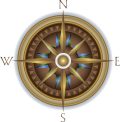Bright blue sky, a sky as big as the ocean. Wildflowers and their brilliant colors. A new spring cascading down the mountain’s jagged rock. A still lake tucked high near a summit.
This is Pagosa Country.
To look upon these sights is breathtaking, and to see these sights — that’s the reason many people come back time and again for the experience.
Leave the roads behind, kiss the asphalt goodbye. The San Juan National Forest is all around you. Pull off the side of the road. Park by a trailhead. Lace up your boots or saddle your horse. Strike out into nature and tread where few have gone.
Backcountry excursions offer visitors an opportunity to experience the sights, sounds and smells of the San Juan National Forest firsthand. Many trails are easily accessible and within relative proximity to downtown Pagosa Springs.
Use your car to reach one of the convenient starting points listed below, then leave it behind to wander trails winding beneath towering pines or along clear mountain streams.
The trails described here cover a variety of terrain and skill levels. U.S. Forest Service trail numbers are in parentheses next to the trail name.
Hiking and riding tips
• Set easy-to-achieve objectives. Unless you are backpacking, plan to return before dark.
• Stay on the trail. Shortcutting causes erosion and is hazardous to your safety, as well as to the safety of hikers below you.
• Think safety. Carry a map, water, snacks and clothing to keep you warm and dry. Weather conditions change rapidly in the mountains, and it may rain or snow at any time. Always travel with a friend, and always let someone know where you are going and when you expect to return.
• Pack out your trash. Help keep the forest clean and pack out trash someone else left behind.
• During hunting seasons, wear a blaze orange vest to help keep you safe in the woods.
• Share the trails. The trails listed are shared by many visitors, some using horses, and in some areas, bicycles or ATVs. For the safety of all involved, give horse riders the right of way by moving well off the trail on the downhill side when it is safe to do so. To avoid startling the horses, say “hello” so they know you are a person, not a predator.
• Trail signs are usually found at trailheads and major junctions of maintained trails. Take a moment to read the information posted at trailheads. Not all junctions or cross-country routes are signed.
• A Pagosa Country map is available to direct you to the various trailheads. It is also a good idea to pick up a national forest map that clearly shows all access roads, trails and special area boundaries.
You can also check out the Forest Service Interactive Visitor Map to find out about recreational opportunities: www.fs.fed.us/ivm/ or on the web: www.fs.usda.gov/sanjuan. The San Juan National Forest Visitor Map is available at www.avenzamaps.com/maps/83403 (east side) and www.avenzamaps.com/maps/83402 (west side).
Current information about trail conditions are available at www.pagosatrails.org and the Visitor Center, located at 105 Hot Springs Blvd., and the Pagosa Ranger District office at U.S. 160 and 2nd Street. The office is open Monday through Friday, 8 a.m. to 4:30 p.m. It is closed for all federal holidays.
